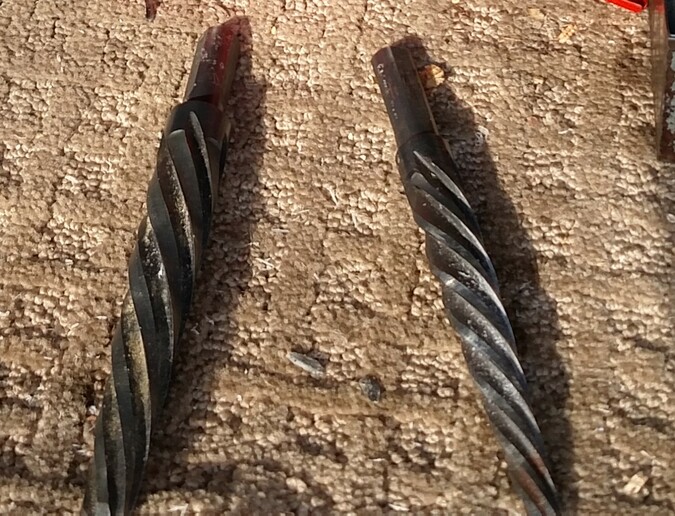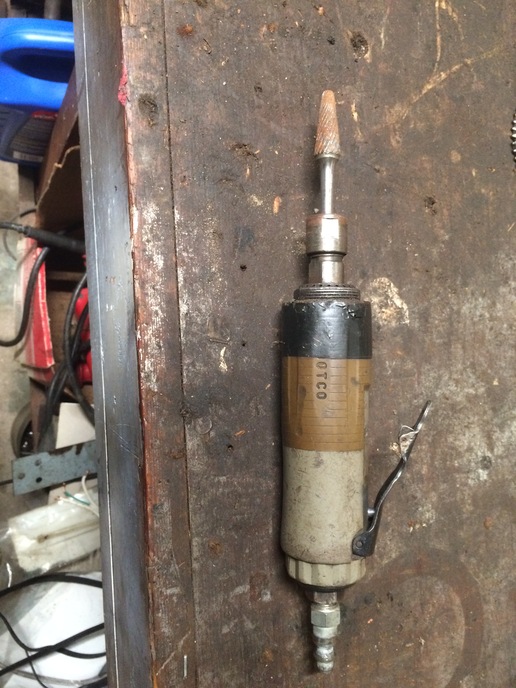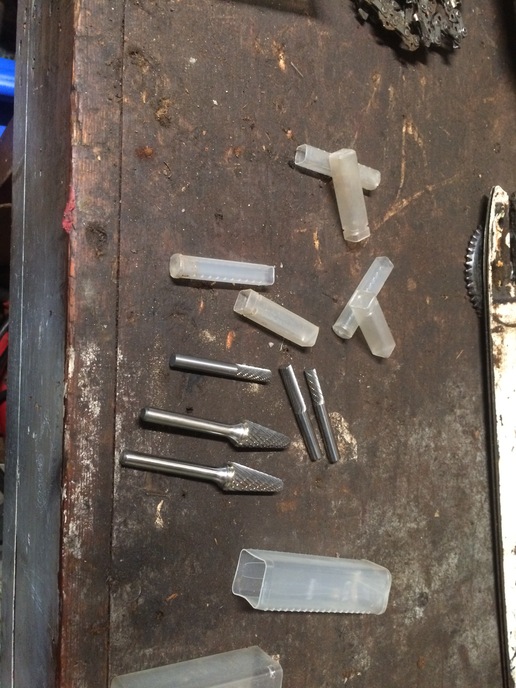Hello guys. Got some projects coming up that involve drilling some steel from 1/4 to 1/2" thick with either 1/2" or 3/8" holes. Got the issue broke down into 6 questions. Just looking for opinions and experience.
1. Type of drill bit. I've bought a bunch from black oxide, titanium, cobalt, and maybe some others over time. So far the black oxide and titanium have been a waste of money except for wood. Seems like cobalt stays sharper and cuts longer. I've got Ridgid and Menard's masterforce in cobalt with the Ridgid being best but more expensive.
2. Speed of drilling. Bits claim to be hss, high speed steel, but my experience from heavy duty shop drills with big bits was to go slow with a low rpm. Not sure how slow.
3. Pressure needed. My experience with the big presses was to use a lot of pressure but hard to do with a hand drill and sometimes it just dulls the bit.
4. Cutting oil. Have used oil on a heavy duty shop press with success on big bits but when drilling by hand or with my cheap craftsman wood drill press with changeable speeds, sometimes the oil just stops the bit from cutting and it just spins. That craftsman press also bogs down real easy under pressure.
5. How to deal with that point of bit breakthrough where it grabs the bit and torques my wrist or spins the metal. With a big press I used to lighten up the pressure just as it gets to that point and then push down hard to cut on through.
6. I've got a couple bit sharpeners and have sharpened them by hand with varied success. Sometimes the point doesn't come out right or the angle of the cutting edges, and sometimes they will drill a dimple the size of the bit and then quit.
So anyway, I'm not sure what works best to hand drill 1/2" holes in mild steel some of which isn't so mild. I've been keeping an eye on auctions looking for an old heavy duty stand up drill press.
Thanks for your help and advice.
1. Type of drill bit. I've bought a bunch from black oxide, titanium, cobalt, and maybe some others over time. So far the black oxide and titanium have been a waste of money except for wood. Seems like cobalt stays sharper and cuts longer. I've got Ridgid and Menard's masterforce in cobalt with the Ridgid being best but more expensive.
2. Speed of drilling. Bits claim to be hss, high speed steel, but my experience from heavy duty shop drills with big bits was to go slow with a low rpm. Not sure how slow.
3. Pressure needed. My experience with the big presses was to use a lot of pressure but hard to do with a hand drill and sometimes it just dulls the bit.
4. Cutting oil. Have used oil on a heavy duty shop press with success on big bits but when drilling by hand or with my cheap craftsman wood drill press with changeable speeds, sometimes the oil just stops the bit from cutting and it just spins. That craftsman press also bogs down real easy under pressure.
5. How to deal with that point of bit breakthrough where it grabs the bit and torques my wrist or spins the metal. With a big press I used to lighten up the pressure just as it gets to that point and then push down hard to cut on through.
6. I've got a couple bit sharpeners and have sharpened them by hand with varied success. Sometimes the point doesn't come out right or the angle of the cutting edges, and sometimes they will drill a dimple the size of the bit and then quit.
So anyway, I'm not sure what works best to hand drill 1/2" holes in mild steel some of which isn't so mild. I've been keeping an eye on auctions looking for an old heavy duty stand up drill press.
Thanks for your help and advice.




